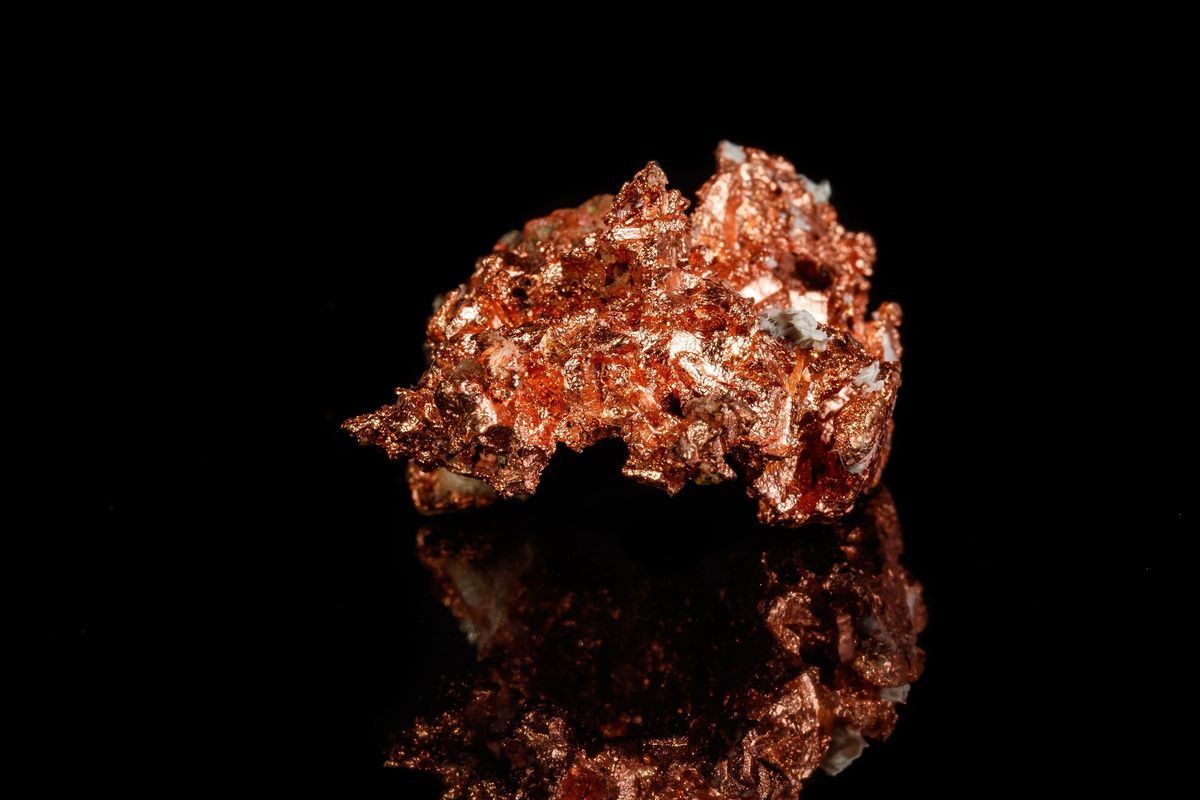Copper Mines in Australia
Learn about Australia's biggest copper mines and significant upcoming copper projects in the country as world copper supply concerns mount.

Home to the world’s second largest copper reserves and the eighth largest copper producer globally in 2024, Australia holds dozens of operating copper mines.
Data from Geoscience Australia's Identified Mineral Resources 2023 report shows there were 36 operational copper mines spread across the country as of December 2022. Since then more have come online, and there are plenty more copper projects in the exploration and development stages.
The future for copper production in Australia remains bright thanks to higher price projections and large investments in exploration and development. The Australian government forecasts that copper export earnings will reach AU$15.3 billion in the 2024/2025 period and AU$16.2 billion in the 2025/2026 period.
Read on to learn more about Australia's biggest copper mines as well as near-term producing copper projects.
In this article
Where is copper mined in Australia?
Copper is mined in many of Australia's states. South Australia is the nation’s premier copper jurisdiction with three operating copper mines and 68 percent of Australia’s economic demonstrated resources of copper. The state is home to the largest single copper mine in the country: the Olympic Dam polymetallic mine, owned by BHP (ASX:BHP,LSE:BHP,NYSE:BHP).
While South Australia has the most copper reserves and three of the country's biggest copper mines, the state with the most copper mines is Queensland. It boasted 12 operating producers as of 2022, including Australia's second largest copper producer, Glencore’s (LSE:GLEN,OTC Pink:GLCNF) Mount Isa Mines complex. In terms of Australia’s copper economic demonstrated resources, Queensland accounts for 11 percent.
New South Wales holds 12 percent of the country’s copper economic demonstrated resources and eight operating copper mines. These include Newmont’s (TSX:NGT,NYSE:NEM) Cadia mine, another of the biggest copper producers in Australia; and Aeris Resources’ (ASX:AIS,OTC Pink:ARSRF) Tritton mine, one of the longest-life mines in the state.
There are 11 copper mines in Western Australia, and the state accounts for 8 percent of the nation’s total copper economic demonstrated resources. The Paterson Province in this region has attracted a lot of attention for large-scale copper discoveries, such as the Telfer mine, which is now wholly owned by Greatland Gold (LSE:GGP,OTC Pink:GRLGF).
This is just a snapshot of some of the country's major copper mines — there are many others that sit on smaller reserves, primarily in New South Wales, Queensland and Western Australia. There are also two copper mines in Tasmania. While they don't have operating mines, Victoria and the Northern Territory are both home to developing copper projects.
Five largest copper mines in Australia
Investors interested in gaining exposure to the opportunities in Australia's copper mining sector should learn about the country's five largest copper mines by production.
The copper mines on this list are owned and operated by publicly traded companies, and mine information and data is sourced from Mining Data Online (MDO). The copper mines in this list are arranged in alphabetical order. BHP, which owns three of the mines on this list, reports production using a fiscal year (FY) ending June 30.
1. Cadia mine
State: New South Wales
Life of mine: 2057
2024 production: 87,000 tonnes metal in concentrate
The Cadia mine, wholly owned by Newmont through its subsidiary Cadia Holdings, includes the operating Cadia East mine and the Ridgeway mine, currently on care and maintenance. In addition to being a significant copper producer, Cadia is also one Australia's largest gold mining operations.
Launched in January 2013, the large underground Cadia East mine is now undergoing significant expansion activities to extend its mine life. The expansion is focused on a now complete two-stage plant expansion and two panel caves, PC1-2 and PC2-3, which will operate until 2034 and 2042 respectively. Over their operating life, the panel caves are expected to combine for production of about 1.3 million tonnes of copper reserves and 5.9 million ounces of gold reserves.
2. Carrapateena mine
State: South Australia
Life of mine: 2055
FY2024 production: 194,700 tonnes copper concentrate
The Carrapateena Mine, owned by BHP Group, is an iron oxide-copper-gold (IOCG) style deposit much like its district neighbours, Prominent Hill and Olympic Dam. This is one of the newest mines on this list, with construction completed in 2019. It became a a part of BHP's copper production portfolio following the major miner's acquisition of OZ Minerals in May 2023. Today, Carrapateena has a production rate of approximately of 4.25 million tonnes per annum.
Carrapateena's copper production for FY2024 increased by nearly 130 percent over 2023's output. "The successful commissioning and ramp up of Crusher 2 in Q3 FY2024 led to record material mined and concentrate produced," MDO states.
3. Mount Isa mine
State: Queensland
Life of mine: 2025
2024 production: 67,400 tonnes copper metal
The Mount Isa copper mine, owned by Glencore, has long been a key producer of the metal. With production at Mount Isa beginning back in 1943, the country's second largest copper producer has become long in the tooth.
Glencore announced in October 2023 that its underground copper operations and copper concentrator will close in H2 2025 due to economic infeasibility resulting from low ore grades, geological challenges and aging infrastructure. Its other assets in the area will continue operations, including the Mount Isa copper smelter; the George Fisher mine, zinc-lead concentrator and lead smelter; and a copper refinery in Townsville.
4. Olympic Dam mine
State: South Australia
Life of mine: 2081
FY2024 production: 215,700 tonnes of copper cathode
Launched in 1988, the Olympic Dam is the largest copper producing mine in Australia, and the crown jewel in BHP's asset portfolio. The mine is also a globally important source of gold, silver and uranium. Operations at Olympic Dam consist of underground mining and surface operations as well as a fully integrated processing facility with a hydrometallurgical plant incorporating solvent extraction circuits for copper, a copper smelter and a copper refinery.
In an effort to increase copper production to meet forecasted growth in demand, BHP is looking to expand its copper smelter and refinery facilities in the first half of 2027. In January 2025, BHP awarded an an engineering, procurement and construction management contract for the proposed expansion.
5. Prominent Hill mine
State: South Australia
Life of mine: 2038
FY2024 production: 98,100 tonnes copper concentrate
Prominent Hill is another important Australian copper mine controlled by BHP that, like Carrapateena, became part of BHP's portfolio through its 2023 OZ Minerals acquisition. Commercial production began at the mine in 2009, and today it produces some of the highest grades of copper concentrate in the world.
Copper production at Prominent Hill nearly doubled in BHP's FY2024 compared to 50,000 tonnes of copper concentrate in FY2023. This is due to a substantial expansion at the Wira Shaft that began in 2022 and is slated to be fully operational by the end of 2025, according to MDO.
Where will Australia's next copper mines be?
Outside of the ongoing expansions at the nation's operating mines, copper exploration and project development is happening across Australia. These are a few advanced copper projects in permitting or under construction held by publicly-traded mining companies.
Caravel project
The Caravel copper project, owned by Caravel Minerals (ASX:CVV), is a permitting-stage copper porphyry project located in Western Australia. The project has a total mineral resource of 3.03 million tonnes of contained copper from 1.28 million tonnes of ore. Caravel Minerals' website says the project is "Australia’s largest undeveloped copper deposit and the fourth-largest copper discovery worldwide in the last decade." A feasibility study is expected to be completed in Q2 2025 and permitting is underway.
Elizabeth Creek project
The Elizabeth Creek project is owned by Coda Minerals (ASX:COD) and located in the Olympic Copper Province of South Australia. The company completed an updated scoping study on the project in December 2024 demonstrating robust economics. The proposed operations at Elizabeth Creek includes three open-pit mines, one underground mine and a hydrometallurgical processing plant. For Phase 1, Coda plans to produce copper-cobalt concentrate in the first year to drive cash-flow. In Phase 2, the completed hydrometallurgical plant will produce higher value saleable end-products such as copper cathode, battery-grade cobalt sulphate, zinc carbonate and silver doré.
Eva Copper project
The Eva Copper project in Queensland is owned by South Africa's Harmony Gold Mining Company (NYSE:HAR). The project hosts the Little Eva and Blackard deposits, planned as open pit operations, as well as four smaller satellite pits. Eva is fully permitted and nearing completion of a feasibility study, which will help inform a final investment decision by January 2026. It is currently expected to produce 50,000 to 60,000 tonnes of copper annually. In mid-2024, the state granted Harmony AU$20.7 million for Eva under the Mount Isa Mining Acceleration Programme.
Havieron project
The Havieron project is an underground copper-gold development-stage asset owned and discovered by Greatland Gold and located in the Paterson region of Western Australia. Previously a partial owner, the company re-acquired the full rights to the project along with the Telfer mine from Newmont on December 4, 2024. Greatland Gold plans to process ore from Havieron at the nearby Telfer mining facility.
Whim Creek project
Whim Creek is a fully permitted copper-zinc project in Western Australia's Pilbara region with four deposits, two of which are proposed as open-pit mines and two as underground mines. The project is owned by Anax Metals (ASX:ANX) and Develop Global through an 80/20 joint venture. Anax is promoting Whim Creek as a potential processing hub with a concentrator and heap leach combining for capacity of 20,000 tonnes of copper equivalent per year. The company is also testing its bioleaching technology with copper extraction results of 77 to 80 percent.
FAQs for copper mines in Australia
Is Australia rich in copper?
Australia is the eighth top copper-producing country, and there are many ASX-listed copper companies mining for the metal both in and outside of the country. There are actively producing copper-focused mines in five Australian jurisdictions — Western Australia, South Australia, Queensland, New South Wales and Tasmania — while exploration and development is being carried out in a fifth jurisdiction, Victoria. There are known deposits across every jurisdiction, however.
This is an updated version of an article first published by the Investing News Network in 2021.
Don’t forget to follow us @INN_Australia for real-time updates!
Securities Disclosure: I, Melissa Pistilli, currently hold no direct investment interest in any company mentioned in this article.
Editorial Disclosure: Anax Metals is a client of the Investing News Network. This article is not paid-for content.
- ASX Copper Mining Stocks: 5 Biggest Companies ›
- Top 5 ASX Copper Stocks of 2024 ›
- Top 10 Copper Producers by Country ›
- Top 5 Copper Reserves by Country (Updated 2024) ›
- Top 10 Copper-producing Companies ›





